¶ Introduction
Mast bumping occurs when main rotor hub of heliopter contacts and damages the main rotor mast.
The consequence: rotor separation from the mast.
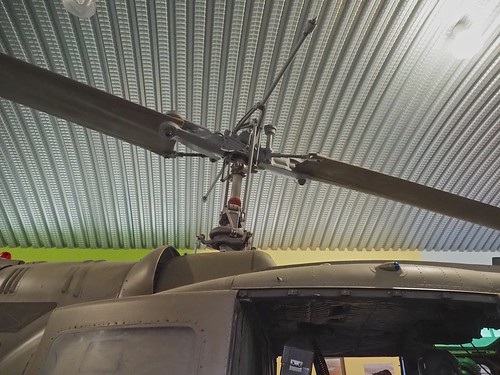
Mast bumping is peculiar to two-blade rotor systems such as many Bell and Robinson helicopters.
¶ Cause
Mast bumping is the result of poor pilot technique and has disastrous effects on the helicopter
The hub making contact with the mast requires excessive flapping. Even under high speed, high gross weight and high altitude conditions, the degree of blade flapping is well within maximum allowable values and the risk of mast bumping is zero under all normal flight conditions when correct piloting techniques are maintained. However, incorrect techniques that causes excessive flapping set the stage for disaster.
A blade's flapping amplitude is increased by:
- Gusty wind conditions
- Sudden attitude changes caused by abrupt cyclic inputs
- Sideways flight at or near the helicopter's maximum allowable speed
- Flight under low, zero or negative 'g' conditions
Any of the above, or a combination of them, impose a risk of excessive flapping, but the low-g situation is the most dangerous for the development of mast bumping.
¶ Low-G Condition
Low-g condition is a phase of aerodynamic flight where the air-frame is temporarily unloaded.\
In that phase, people on board can feel weightless because they are in free-fall and the helicopter is decelerating vertically very quickly.
In such a situation, main rotor blades may flap beyond normal use limits. The excessive flapping can cause the root of the blades to exceed the limit of their hinges and this condition, known as mast bumping, can cause the separation of the blades from the hub or for the mast to shear, and hence detach the whole system from the helicopter, falling from the sky
This situation is produced by a very quick action in the collective/cyclic pulling it down during an auto rotation or during maneuvers over the terrain.
Low-g conditions can be disastrous for helicopters
¶ Tail Rotor Drift
Tail rotor drift or translating tendency, is typically balanced by a slight tilt of the main rotor disc in a direction opposite tail rotor thrust. thrust.
With a counterclockwise rotor, the disc is tilted slightly to the left, so the horizontal component of main rotor thrust opposes drift, and through that it opposes yaw.
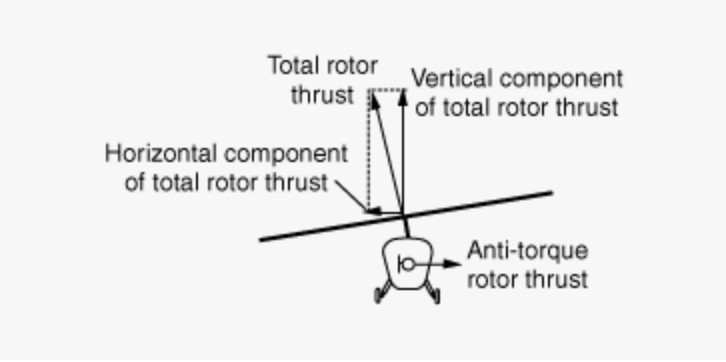
¶ Pilot Induced Low-G Condition
Sometimes Low-G conditions during flight can be induced by poor pilot teqnuiqe. When cyclic is moved forward rather firmly, such as during a push-over at the end of a zoom climb, especially if the pilot lowers collective at the same time.
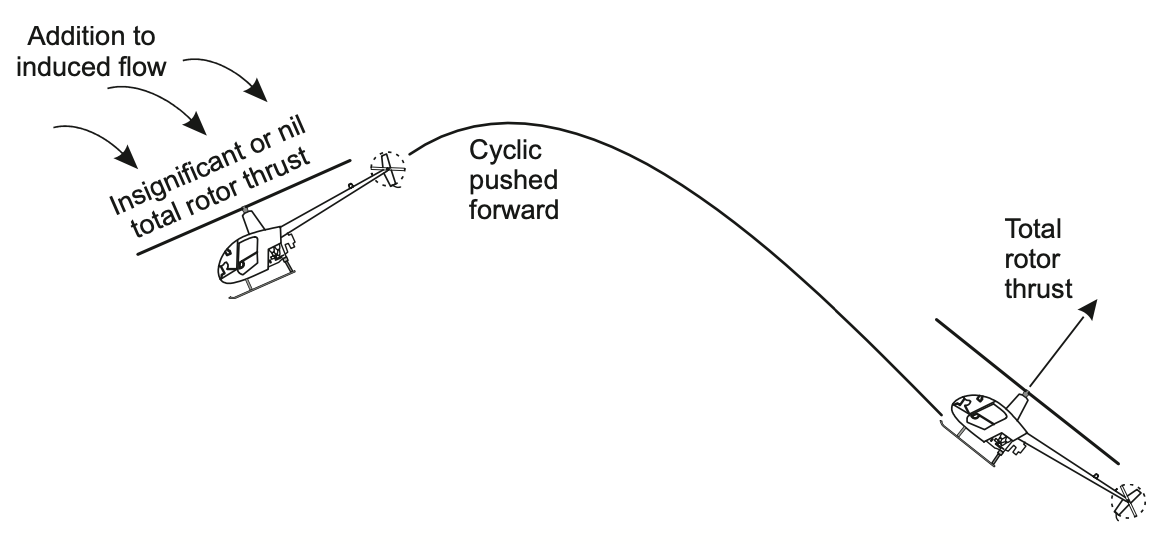
The amount of main rotor thrust is reduced or even eliminated by a combination of reduced collective and forward cyclic.
Forward cyclic decreases blade angles of attack as the helicopter's up and forward momentum increases the induced flow.
A greatly reduced or zero total rotor thrust allows the tail rotor thrust to yaw the aircraft's nose to the left. The resulting skid to the right causes the fuselage to lag so that a right rollresults.
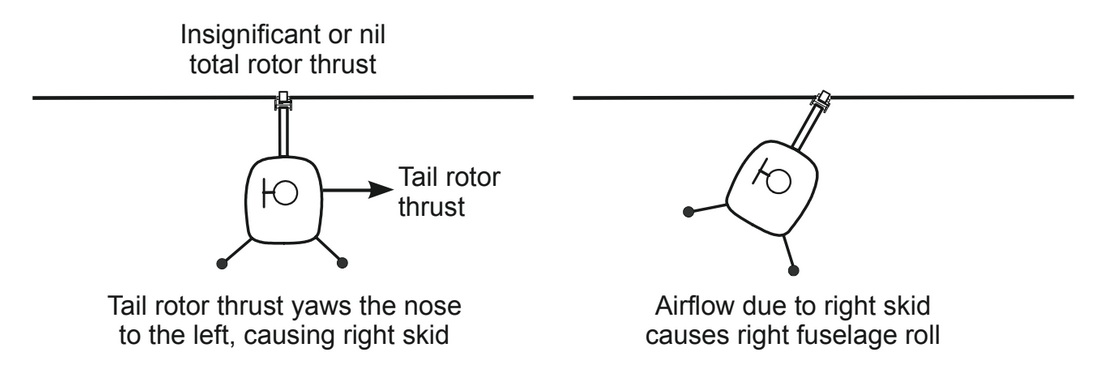
The tail rotor thrust also forms a right-hand turning moment around the aircraft's center of gravity, which is now much lower down than the tail rotor. As the aircraft continues to roll right ,while cyclic is forward but not to the side, the clearance between the rotor head and the mast is reduced, figure 1.
This condition is not in itself dangerous, but incorrect flying techniques can make it so.
¶ Recovery
¶ Incorrect Action
The unwary pilot may instinctively use left cyclic to oppose the increasing right roll.
This left lateral cyclic action causes upward flapping on the right-hand side of the disc, so that the clearance between the rotor head and the mast on the left-hand side lessens even more.
Under normal, positive g conditions, this left cyclic input would have produced a horizontal component of total rotor thrust to the left, creating a moment that would have brought the aircraft back to the required attitude.
Under zero or negative g conditions, however, initial left cyclic fails to provide the restoring moment resulting from disc tilt and further left cyclic is similarly ineffective.
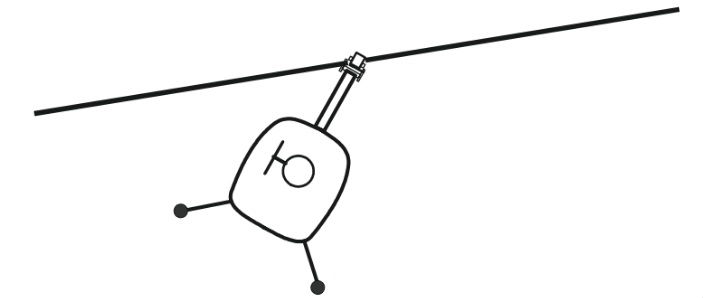
The clearance between rotor head and mast becomes smaller still, and if not corrected, the two connect and the rotor may separate from the mast.
¶ Correct Action
Total rotor thrust must be restored. To do this the pilot must reload the disc by either moving the cyclic aft or increasing collective.
Of the two techniques, increasing collective is less desirable because the associated increase in power tends to produce more yaw problems, particularly under low g conditions.
Also, tests have shown a tendency for main rotor underspeed or gearbox over torque when the collective recovery technique is used.
The most effective recovery technique from a low or zero g condition is:
- Apply gentle rearward cyclic to reload the rotor (reintroducing a positive g situation), then
- Use left cyclic to roll the aircraft level
¶ Avoiding Mast Bumping
Helicopter pilots have to avoid low-g conditions in all situations, because these situations are very dangerous to flight safety.
To perform a quick descent you have to pull down the collective slowly and constantly.
- Principles of helicopter flight. Second edition
- VID 241036 - Creation
- VID 496402 - Wiki.js integration